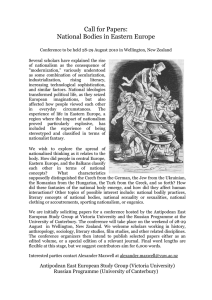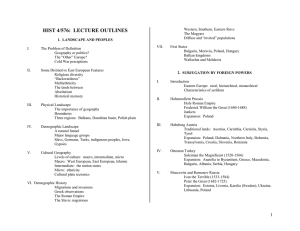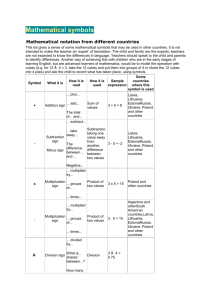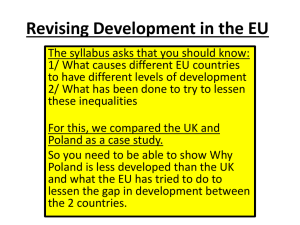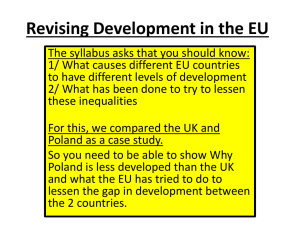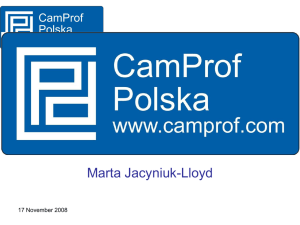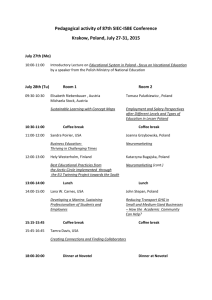Ethnic and Religious Minorities in the 21st Century Poland
advertisement
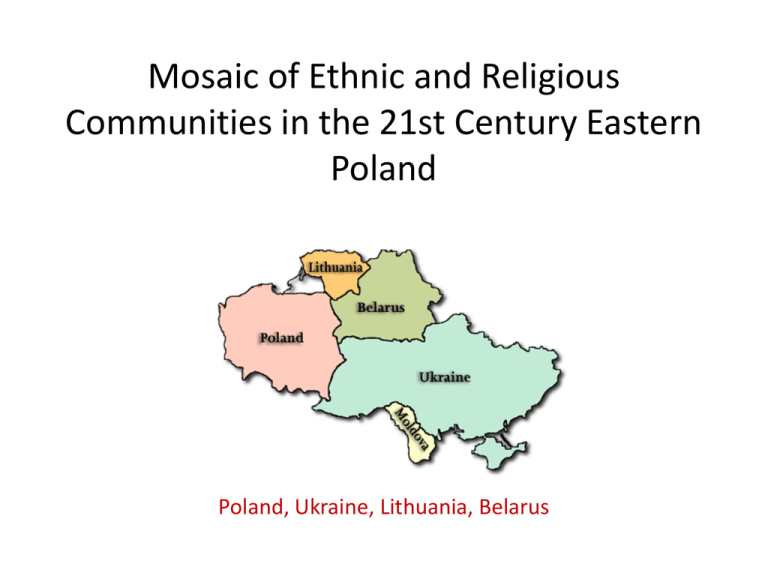
Mosaic of Ethnic and Religious Communities in the 21st Century Eastern Poland Poland, Ukraine, Lithuania, Belarus Family history • Vilnus, Vil’nius, Wilno, Vil’nia, Vilne, Wilna, Vilnius • Lviv, L’viv, Lwów, L’vou, L’vov, Lemberik, Lemberg Husakow (Mościska), Galizien, Austria; later Hussakow (Mościska), Lwow, Poland; now Husakiv, Mostys′ka, L′viv, Ukraine Introduction Sentimentalism, roots and roots of sentimentalism • Critical approach to family history • Critical approach to national history ‘Que’est-ce qu’une nation?’ (Ernest Renan) • Primordialism and perennialism • Modernism • Ethno-symbolism Jus Sanguinis vs. Jus Solis • Changes in political influence • Impact of war and regime resettlements in different periods • Socio-economic factors • Religious tolerance under successive governments • Cultural exchange Where do I begin? Obstacles on the path of each researcher Strategies and Methodology • Choosing theories “A good theory explains important phenomena: it answers questions that matter to the wider world, or it helps answer such questions” (Stephen Van Evera, 1997; 19) • Case selection “The more cases or examples that are studied, the more likely that common causes can be found and generalizations made. Political events are often clarified and illuminated by comparison with similar events and processes in other contexts” (Burnham, Gilland, Grant, Leyton-Henry, 2004:55) • Process Tracing Archival research and interviews with academics from University of Wroclaw, University of Opole, and other national, and local institutions. Where the East meets the West Language “For every nation is one people, having its own natural form, as well as its own language (…) and originality of [national] characters extends to families” (Herder, 1968:7). Role of language in creating and recreating: Ukrainian nationalism Lithuanian nationalism Belorussian nationalism “The new intelligentsia of nationalism had to invite masses into history (…), the invitation card had to be written in the language they all understood” (Anderson, 1983:80). Religion & Cultural Heritage • Role of religion and cultural heritage in preservation of identity of the local communities • Lithuanians, Belarusians, Ukrainians, Tartars, Germans, Lemkos, and other communities • Religious communities of eastern Poland: Catholics, Eastern rite, Byzantine rite, Greek Catholic, Sunni Islam Aims for the future research • Establishing what the communities lost and what they gained will give a wider perspective of globalisation in the East • To present multi-religious and multi-ethnic societies within the rural regions of eastern frontier of European Union • to present whether modern developments in the fields of economy, science and philosophy allowed those communities to preserve their traditions or exchange them for modern thought and solutions • To reconstruct multicultural pattern of societies in different periods of history • To preserve family histories and cultural artefacts remaining in the regions of Mazury, Podlasie, Podkarpacie, and other regions on the territories of Poland, Lithuania, Russian Federal District of Kaliningrad, Belarus and Ukraine
